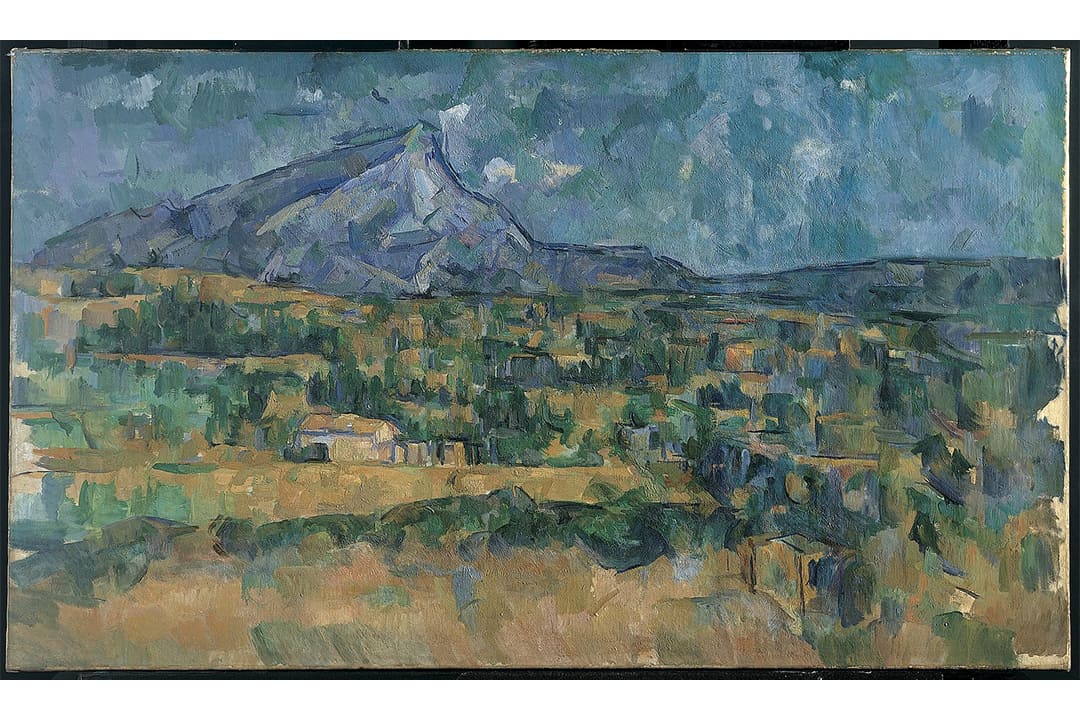You enter an art museum, let’s say the Metropolitan Museum of Art. You walk through the Great Hall and up the stairs, ignoring the allure of the gift store and Greek art. Finally, you enter a wing and check your map: 19th and Early 20th Century European Paintings And Sculpture. You walk straight to The Annenberg Collection.
A painting of about two by three feet is in front of you. The plaque says Mont Sainte-Victoire, Paul Cézanne, ca. 1902–6. You observe the lines on the painting carefully. What they suggest is simple: a mountain, a valley, and maybe some houses nestled in that valley.
The lines don’t seem to be careful delineations of the objects in space, but rather suggestions of them. You get the distinct sense that most of the painting is in your imagination and that Cézanne put oil to canvas to tease this imagination out of you.
Cézanne was denounced and outright called insane by art critics. He was not an impressionist who made unsellable canvases, but worse. Impressionists revered light — a response to what they saw as realism in the then-emerging art of photography. They saw light as both a distinct dot but also a fleeting blur, a duality impossible to capture through realism in photography, which they thought made their paintings more real than a photograph.
Cézanne held an open disdain for the Impressionist perception of light. To him, the way that light played on the eye was only one of many layers of vision, rather than the foundation. Though he desired to truly “copy nature,” he realized that he couldn’t, because nature was made of abstract forms. So, instead, Cézanne created “nonfinito” paintings, or paintings that had blank space that made them seem unfinished. He painted enough lines and shapes for the viewer to understand what the image was, but only just. In doing so, Cézanne assumed that what we see is not necessarily what is, but what we make it out to be.
Was this true? Is there more to visual perception than just seeing light? Does the brain merely process light as we see it or does it play a role in constructing the image? In a chapter called “Paul Cézanne: The Process of Sight” in a book titled Proust Was a Neuroscientist, Jonah Lehrer describes that by the late 1950s, neuroscientists already knew that light affected photoreceptors in the retina.
The idea that light excited these receptors in the retina and caused our brains to reconstruct what our eyes saw was the basis for experiments carried out by neurophysiologists David Hubel and Torsten Wiesel. They flashed light on the retinas of an (unfortunate) cat and recorded electric signals from V1, the first stage in our brain’s visual cortex, in a chain of five regions in the cortex that interpret visual signals.
The results were surprising: nothing happened. No electric signals were recorded when scientists flashed light on the cat’s retina, puzzling the scientists — as that meant that light was not exciting the cells of the V1 region of the visual cortex. This conundrum grew when they noticed a neuron that was excited at periodic times in their experiment — but only between experiments when there was no light. The cell was excited by the shadow cast in between the procedures of the experiment. Lines, shadow, contrast — these are what our neurons like to react to, prompting signals in our visual cortex.
Even with this knowledge, vision remains — at least in part — up to the subjective interpretations of our brain. The objects constructed with these lines and curves are still left to our imagination. Lehrer later describes the case of “Dr. P.,” a man who could see but whose vision received no input from his brain due to a cortical lesion. This meant that, although he could still see things, he couldn’t understand what they were; he found it difficult to pick out objects from one another. This is the man who mistook his wife for a hat, which neurologist Oliver Sacks writes about in the eponymous book.
Let’s return to Mont Sainte-Victoire. Cézanne has painted only the basics of interpretation, what we need in order to understand the landscape and nothing more. Cézanne seemed to have an innate understanding that the visual information we receive enters our minds as abstract and formless, only gaining meaning once it goes through several layers of cognitive processing. In other words, we see the shapes and lines and contours and assign meaning to these elements. This is how we are able to gain an understanding of our reality — otherwise, we would only be left with the original formless abstractions we see, like Dr. P.
Cézanne forces us to become perceivers rather than passive observers. We fill in the blanks with what we need to make the painting meaningful to us, something we practice every day in our exploration of the world. We produce meaning through the interpretation of geometric abstractions that our eyes are inundated with every day.
Looking at the painting, that all sounds exhausting — but also thrilling. You fold up your museum map and put it in your pocket. You accept your fate as the producer of the meaning of abstractions and vague suggestions.


